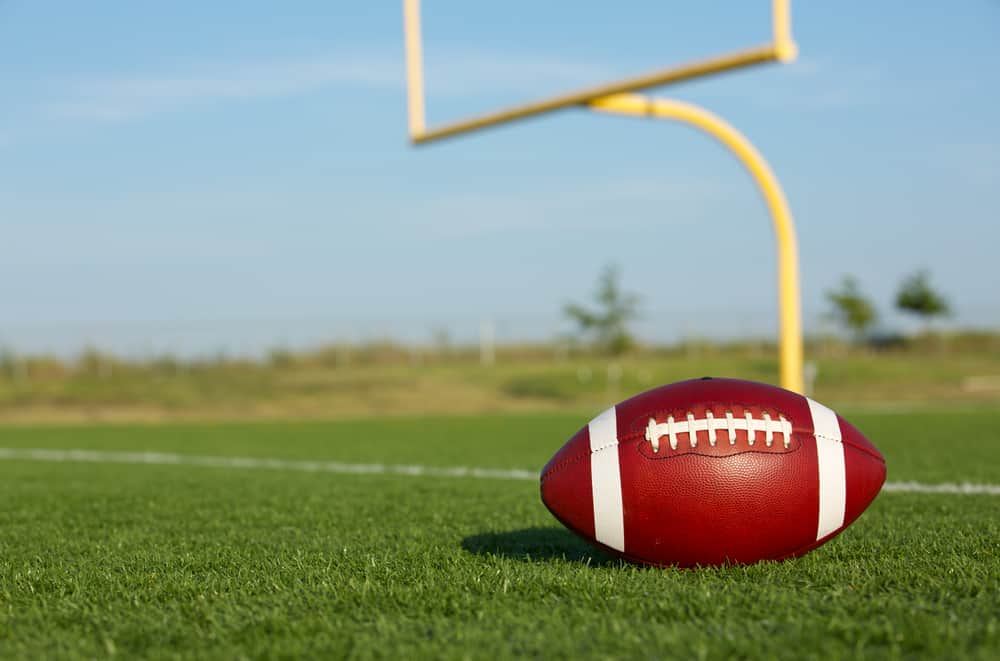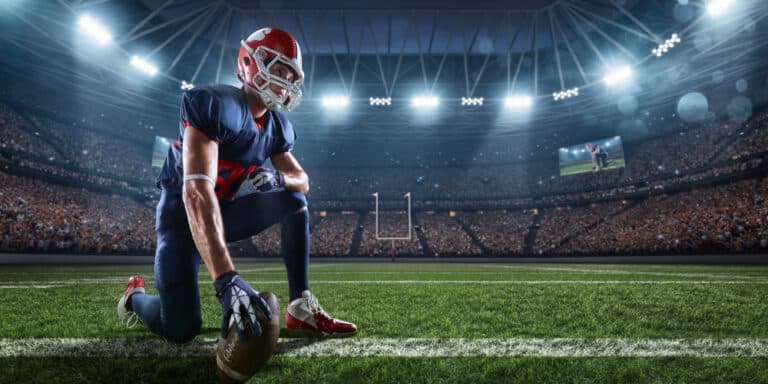Can You Kick A Field Goal Without A Holder? (Find Out Here)
In the world of the NFL, most people worry about how many touchdowns their team scores. However, in a close game, the victor is often decided by how accurately the kicker racked up the field goals. Most kickers use a holder to improve their accuracy, but can you kick a field goal without a holder? Or is it taboo?
Although most American football players use a holder when kicking a field goal, it is not a legal stipulation that they need one. A holder provides several benefits to the kicker, but so long as the ball is on the ground, the kicker can score points, provided they clear the goalposts.
Ball holders are not legally required, but they make the goal-kicking process simple, efficient, and accurate. But what are some of the pros and cons of a holder? What happens if you don’t have one? Why do you need one anyway? And what does the rule book have to say?
Why Are There Holders If They Are Not Necessary?
While not always as glamorous as a touchdown, field goals are essential to any (American) football game.
Field goals are not limited to extra points after a touchdown. Often these kicks at the goal are part of strategic play. For teams to score a cool 3 points, their kickers need to be able to take the shot from most distances on the field.
During the early days of American football (AF), field goal kickers were ordinary players. Skip forward a few hundred years, and the goal kickers are specialized players who practically never miss.
However, these strategic plays and guaranteed points are often impossible (or not easy) without a holder.
A holder stabilizes the ball, allowing the kicker enough time to aim, take a run-up, and strike (kick) the ball with enough power and accuracy to get it between the uprights.
Without a holder, the pressure is higher on the kicker (if the ball shifts from the wind or gravity, it will hamper the kick).
A good holder makes field goal-kicking a dream. They angle the ball just right, hold it steady, and provide the kicker with the peace of mind and time they need to expertly execute the kick.
Where Does The Holder Fit Into The Process?
The “specialist team” usually comes onto the field during a field goal attempt.
At the snap (start of play from a scrimmage), the long snapper (a specialist who excels in passing the ball seven or more yards backward between his legs) throws the ball to the holder.
The holder catches the ball and places it for the kicker. The holder needs to be quick and accurate in placement, with the laces facing away from the kicker.
The kicker then takes the shot at goal. A good holder lets the place kicker kick the ball out of their “hand” (i.e., he keeps his finger on the ball until the kicker makes adequate contact with it).
This holding duration prevents the ball from falling over.
Without the holder, the kicker would need to catch and dropkick the ball (an alternative to a holder).
The holder is quite essential to the process, but all the “cogs” need to function as a unit to set up the kicker for the shot (which includes the linesmen blocking the opposing team’s line).
Although the kicker can dropkick the ball, his range and success are often not as good as when there is a holder.
What Does The Rule Book Say About A Holder?
Although the rules don’t stipulate that a kicker needs a holder, they clearly state that a field goal only counts if the ball is “placed” or “dropkicked.”
These rules make kicking the ball through the posts slightly more difficult and lend themselves to a holder’s assistance.
Although kicking tees may be used during kick-off (at the start of play), they are not allowed during field goals, which means the only way to place-kick is with a holder.
The Pros And Cons Of A Holder For Field Goals
To fully comprehend the benefits of a holder (and how much they would be missed if they were absent), we’ll examine some advantages and disadvantages a holder brings to field goals.
The Benefits Of A Holder
- A holder allows for strategic plays. Instead of waiting until the 10-yard line to take a kick at goal, teams have the option of kicking from further away (provided the kicker is confident) because a place kick travels further than a drop kick.
- A holder allows the kicker to operate at their best by controlling the ball and allowing the kicker to focus on the task at hand.
- A holder allows the kicker to place-kick for a field goal without the need to try and dropkick.
- Using a holder means that your placekicker doesn’t need to learn an entirely new kicking style; instead, they can focus their talents and skills on placekicking.
The Drawbacks Of A Holder
- A holder is usually part of the “specialist” field goal-kicking team, which means they may not be available for a field goal attempt when this team is not on the field.
- A holder limits kickers from branching out and developing their dropkicking abilities. They act like a “crutch,” so placekickers never need to learn other techniques.
- If the holder is inexperienced or not paying attention, they might end up doing more “harm” than good.
I.e., getting in the kicker’s way, taking too long to set up, dropping the ball too soon, holding the ball at a bad angle so the ball goes skew, or not turning the laces away from the kicker.

Drop Kicking As An Alternative To A Holder In Football
While place-kicking field goals and extra points are common in football, attempting to drop-kick the ball is not such a frequent occurrence.
A drop kick is similar to a punt; however, for a punt, you kick the ball before it hits the ground. When dropkicking, you bounce the ball on its “pointed” end on the ground.
Once it bounces off the ground, you kick it when it’s a few inches off the ground, which requires a significant amount of timing and practice to master (it doesn’t bounce particularly high off the ground, and there is a chance that the ball bounces skew when you throw it straight down toward your feet).
The last dropkick attempt in the NFL was in 2006 by Doug Flutie while playing for the New England Patriots against the Miami Dolphins.
Fortunately, the kick was a success, but it was for an extra point, not a field goal.
Although a popular kicking technique in rugby, football balls are less well-adapted to dropkicking. Drop kicks are also usually less “potent” in their range (place kicks go further).
Unfortunately, within the world of AF, the dropkick is too uncertain of a kick, with too many variables and too little control.
These factors make it take second place to the place kick, which, in turn, warrants the use of a holder.
Conclusion
Although holders are not required per American football rules, all teams use a holder for place-kicking field goals. The holder provides the platform for the kicker by catching the ball, setting it up, and ensuring it does not shift before being kicked.
The alternative to place kicking is drop kicking. Although this technique is popular in rugby, it has not been used in the NFL since 2006.
References
- https://www.quora.com/In-American-football-why-cant-you-punt-the-ball-through-the-uprights-for-3-points-Does-a-field-goal-require-a-holder-or-that-the-ball-be-grounded-while-kicked
- https://www.smithsonianmag.com/smart-news/nfl-considering-eliminating-extra-point-after-touchdowns-180949427/
- https://www.sportskeeda.com/nfl/nfl-drop-kick-field-goal-explained-what-works
- https://operations.nfl.com/the-rules/nfl-video-rulebook/scoring-plays/







